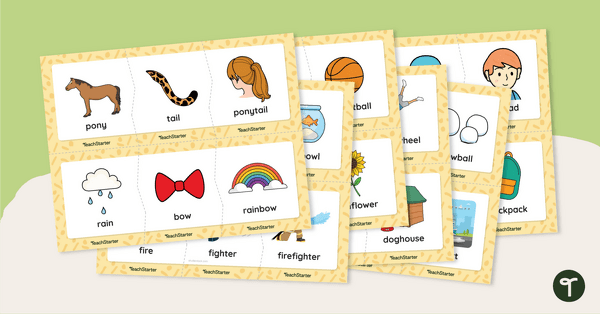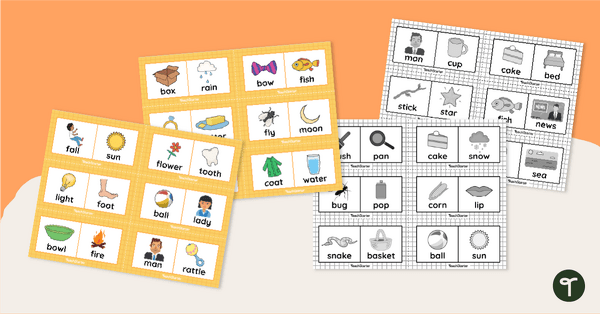Have students explore the perimeter of composite figures with this matching game perfect for collaborative learning.
Get Your Students Exploring Composite Figures
Have your students “Been there, done that” when it comes to finding the perimeter of basic shapes such as squares, rectangles and triangles? If so, it’s time to give them a new challenge – finding the perimeter of composite figures. Composite figures are those that are made up of two or more basic shapes. A shape that is made up of three rectangles, for example, would be considered a composite shape.
This matching game of composite figures contains 18 shape cards and 18 cards showing a perimeter total. Students are required to make matches by pairing a composite figure with its perimeter.
This resource downloads as a full-colour PDF or editable Google Slides file. It includes:
- Instruction page
- Matching cards
- Recording sheet
- Answer key
We recommend printing the cards on card to increase the durability of the resource. Place the cards together in a large envelope or ziplock bag for safekeeping. All you need to do is pull out the resource and that’s your perimeter lesson taken care of!
Multiple Uses for These Composite Figures Cards
There are many engaging ways these composite figures cards can be used in your lessons on perimeter. Here are a few suggestions you might like to try:
- Find Your Match – Provide each student with a card from the pack. Have your students walk around the room to find the student who has the card that matches theirs. As an extra challenge, see if students can complete the task in silence!
- Card Games – For those students who want to add an extra element to the matching activity, have them incorporate well-known games such as ‘Snap!’, ‘Memory’ or ‘Go Fish’ into the task.
- Class Review – Use the task cards as a class review activity. Choose a card to project on your interactive whiteboard, then have the students write the answer on a mini whiteboard.
These composite figures match-up cards can be a versatile and enjoyable tool for reinforcing maths skills and concepts in the classroom while promoting active engagement and critical thinking.
Download and Print This Composite Figures Resource
Use the Download button above to access the easy-print PDF of the editable Google Slides version of this composite figures matching game. (Note: You will be prompted to make a copy of the Google Slides template on your personal drive before accessing it.)
As this resource contains an answer sheet, you may wish to print one copy only, then remove the answer sheet before making further copies.
This resource was created by Kaylyn Chupp, a Teach Starter collaborator.
More Perimeter Resources for Your Classroom
Teach Starter understands that you want to spend less time planning and more time teaching! Click below to access more great perimeter resources to make your maths planning a breeze!
[resource:5021595] [resource:18109] [resource:4875782]












0 Comments
Write a review to help other teachers and parents like yourself. If you'd like to request a change to this resource, or report an error, select the corresponding tab above.